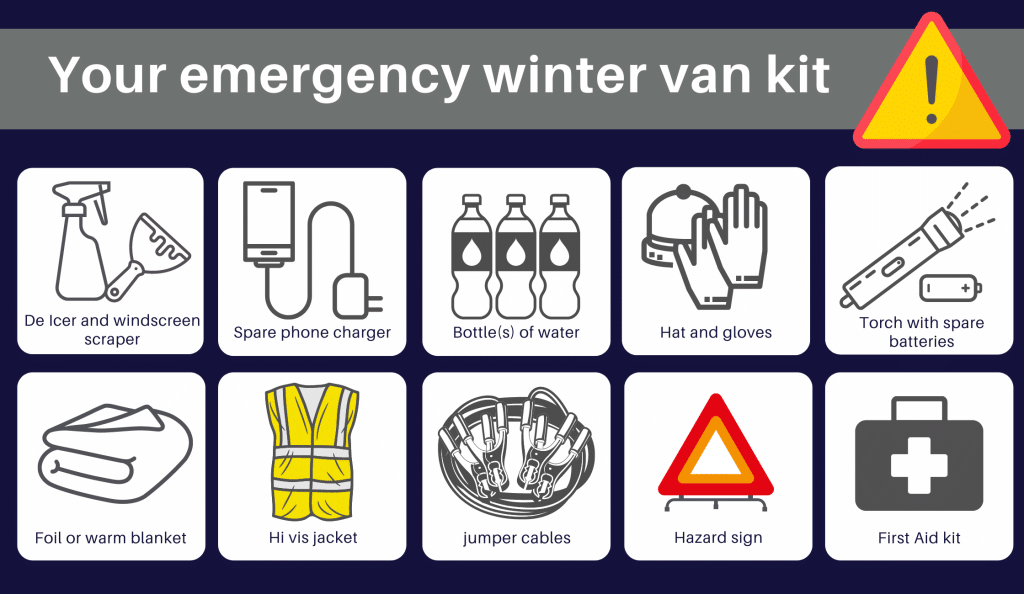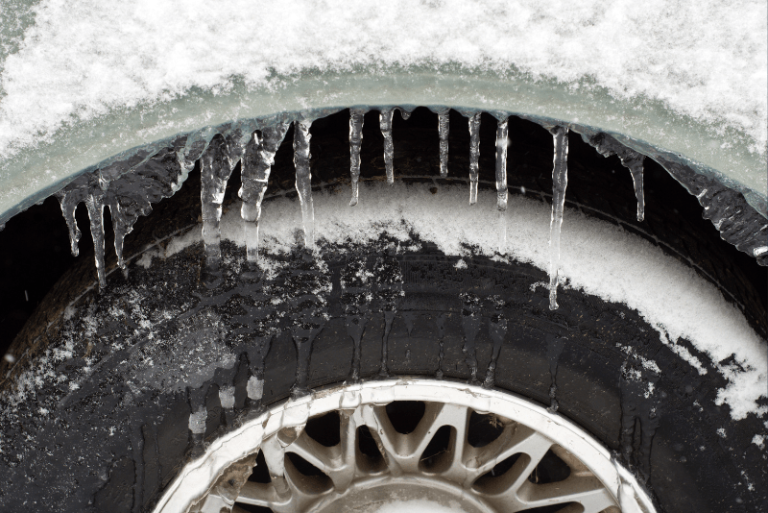Is your van really ready for winter? The cold weather will put a lot of additional stress on your vehicle and could result in a breakdown that could cost you thousands in repairs and lost business.
Sarah Tooze, Consumer Editor at online van marketplace AutoVillage reveals her winter checklist for van drivers.
Check your antifreeze
Antifreeze is vital for the health of your van’s engine. It prevents the water from freezing and also raises the coolant’s boiling temperature, which prevents the engine from overheating.
Replacement intervals for antifreeze range from three to four years, but your owner’s manual will confirm this as it very much depends on the model of the van and the size of its engine. If you are unsure when your coolant was last changed, ask your local garage to test the strength of the fluid as the properties of the antifreeze will deteriorate over time.
Check your van’s battery
The 12v battery in your van has a lifespan of five to six years. Some batteries will last much longer than this, but their ability to generate and hold a charge will diminish over time and this increases the risk of a breakdown over the winter months (with the cold weather putting additional strain on the battery).
If your van is struggling to start in the mornings or the battery warning symbol is illuminated on the dashboard, then the 12v battery may need to be replaced. Poor headlight strength is another sign of a worn-out battery.
Clean your windscreen and wipers – regularly
It’s important for van drivers to see and be seen during the dark, winter months! Get into the habit of cleaning your van’s headlights and taillights every two weeks with a damp cloth as road dirt and salt will obscure the light housings and make your vehicle more difficult to see at night.
Clean the windscreen wipers every two weeks, too, as dirt and road salt will quickly build up. And clean the interior of the windscreen with a good quality glass cleaner and wipe dry with a microfibre cloth – as a clean screen will demist quicker than one covered in dirt and dusty finger marks.
Check your van’s lights
If you’ve ever been driving along at night and found yourself with a light out, then you’ll know how important lights are – both to see and be seen by other road users. Make sure your lights work on all settings (parking, dipped and main beam). You can also point your van at a garage door when it’s dark and check that the beams are not too high or low, and that they are correctly aligned.
Check the taillights operate as they should and test the brake lights by reversing against a wall or garage door and checking the reflections. Finally, test your van’s fog lights and indicators.
Inspect your van’s tyres
As a general rule, you should check your van’s tyres every two weeks and before a long journey. And these inspections are even more important in the winter months, with poorly inflated or heavily worn tyres making driving extremely hazardous in wet or icy conditions.
The correct tyre pressures will be listed in the owner’s manual and/or on a plate inside the driver’s door frame. Check the sidewalls for signs of damage (bulges or tears) and inspect the tread depth. By law, you must have 1.6mm of tread across the central three-quarters of the tyre.
Prepare an emergency winter van kit!
While you may do all you can to avoid a van breakdown, sometimes these things do happen. It’s always a good idea to plan for a van breakdown in winter.
With recovery services in high demand between December and February, you may be waiting a couple of hours for support. Grab a plastic tub and pop these items in it for emergencies.

Van breakdown cover
Did you know that A-Plan’s breakdown insurance covers vans or LCV’s up to 3.5t, and includes Home Start? We know the real cost of being unable to leave your home in the morning to attend a job so breakdown cover can be included in your van insurance premium, or as a stand-alone policy.
If you aren’t sure whether your van insurance includes breakdown cover, get in touch with your business branch, they will be happy to check this for you.

